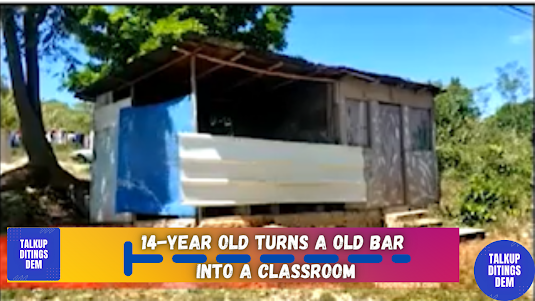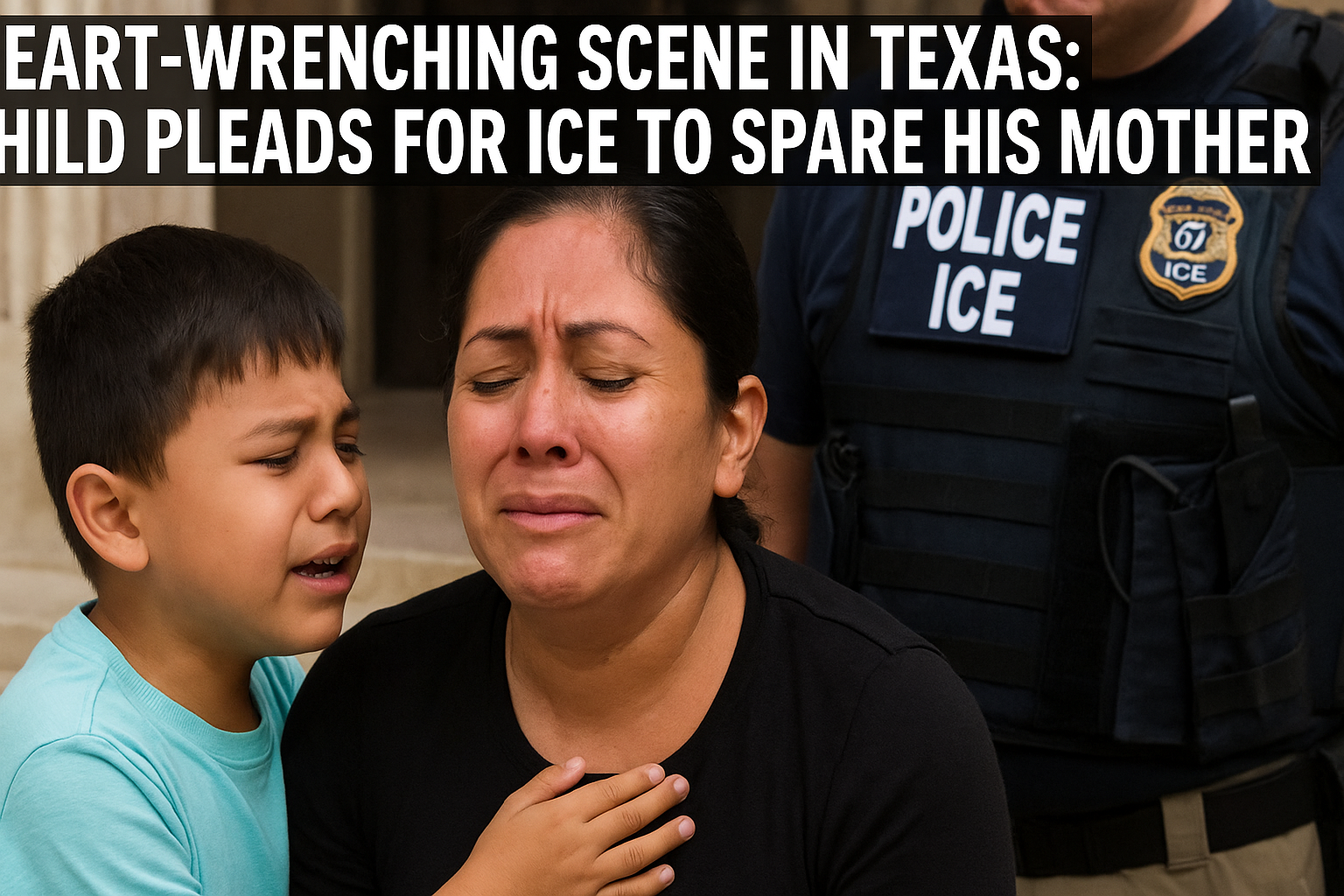Children Playing The Roll Of Teaching
“Have a look at Children Playing the video below and let me know what you think. The video shows a 14-year-old in charge
Thank you for reading this post. Don't forget to subscribe!
Checkout Our Social Media Pages HERE
of a class of students. One mother in the video says that she is happy for the class because she does
not have time to assist her child”.
One might ask, “If you do not have the time for your child, then why have them”?
Is it possible that the police could prosecute the parents for neglecting their children if something happens to any one of them?
We might be excited by 14-year-old teaching these children but the thought of having a child being responsible for several children is unbelievable.
Descriptions of how adults interact with students as they play reflect the diverse viewpoints of the adult’s role in children’s learning and the relationship between these roles and play pedagogy.
READ MORE:
These approaches can best be thought of in terms of a continuum, with child-guided or ‘free play’ at one end and adult-led play and learning activities at the other.
Free play involves experiences that are led and decided on by the child without intervention from adults (Cooper, 2014; Pyle & Danniels, 2017; Weisberg, Hirsh Pasek & Golinkoff, 2013; Pramling Samuelsson & Johansson, 2006; Goouch, 2008), limiting the teacher’s role to providing resources for play, and supporting without taking over or interrupting the play.
At the opposite end of the continuum, teachers deliver learning material and information and manage tasks with a high level of adult control (Doll, 1993; Fosnot & Perry, 2005; Epstein, 2014; Walsh et al., 2007).
Teachers can decide where on the continuum to position their role by considering the desired outcomes of the learning activity and utilizing intentional teaching methods to support new learning that occurs because of a play interaction (Pianta, 2003; Epstein, 2014; Weisberg et al.,2013; Alfieri, Brooks, Aldrich & Tenenbaum, 2010; Pyle & Bigelow, 2014).
Intentional teaching in play
An intentional teacher ensures that they draw from a wide range of evidence-based teaching practices to support the different ways children learn.
These practices include teachers providing a consistent but flexible timetable that draws on both children- and adult-guided learning experiences.
Intentional teachers ensure an appropriate mix of these approaches where the teacher is alongside children in their play, supporting learning as the play unfolds (Epstein, 2014; Snyder et al., 2017, cited in McLaughlin & Cherrington, 2018).
Running alongside the opportunity to learn through play is the selective and explicit teaching of smaller groups as well as strategically timed larger and/or whole-class activities (Aiono, McLaughlin & Riley, 2018; Gabriel & Allington, 2016).
READ MORE:
Teaching through play can also be used to support literacy and numeracy instruction.
Teachers can intentionally create a range of contexts in which students can consolidate and explore their understanding of literacy and numeracy concepts within self-directed play.
This might include children establishing a shop or restaurant, creating their own money system, writing signs, menus, or labels, or building a fort construction and using tape measures to estimate size and clipboards to record plans or hazard signs.
When a teacher implements an intentional teaching approach to learning through play, the opportunities to integrate real-world learning experiences that support the development of literacy and numeracy along with all other learning areas are considerable.
How do you plan for teaching through play?
Adopting a planned approach to teaching through play is critical to ensuring the positive learning outcomes associated with play pedagogies for students.
However, given the importance of self-directed learning in a play-based environment, approaches to planning for play differ from the more traditional planning undertaken by teachers and schools.
A key component of this planning is the use of observational data collected by the teacher that captures the knowledge and interests children present while engaged in play.
This formative assessment approach enables teachers to notice key themes, interests, and skill development areas and then plan to intentionally respond by providing relevant resources, introducing play invitations, scaffolding learning, and providing direct instruction as appropriate.
Intentional teachers recognize and plan for the importance of the classroom environment in supporting students’ learning when engaged in play.
This includes the careful inclusion of resources and learning materials that engage and motivate students in their play and consideration of how children use the classroom and outdoor play space.
READ MORE:
Teachers can plan to introduce resources, concepts, and skills in response to observations related to students’ play experiences to encourage students to explore, wonder, engage with and pursue interests further in their play.
This can take the form of a play invitation (Haughey & Hill, 2017).
Play invitations are used to introduce new ideas, topics, or areas of the curriculum not previously explored by the students.
Teachers introduce these with a view to ‘inviting’ students to explore new areas in their play, often related to curriculum areas.
Play invitations maintain the importance of child-led play and do not attempt to direct children while enabling teachers to intentionally plan to respond to their student’s learning needs and interests as they play.
In combination with planning for play opportunities and the extension of exploration in play through provocation and invitation, teachers can also plan for the intentional teaching of the social and emotional development of their learners.
Once again, using observational data, teachers identify skills and behaviors requiring development, such as turn-taking, accepting no, managing conflict, solving problems, or expressing emotions as a focus area for the class over a set period.
Using a combination of scaffolding and explicit teaching practices, teachers can plan to support their student’s social and emotional skill development as they interact with their peers during play.
AN INVITATION TO PLAY AN EXAMPLE
img
While observing and listening to some of her students engaged in construction, Julie identified the children were talking about building castles.
The conversation between the children was focused on how they were planning to defend their castle from robbers.
Julie could see an appropriate link to the technology and social science areas of the curriculum.
She found some books on castles and they talked about the portcullis, moat, tower, battlements, and bailey.
During a whole-class discussion, they watched a video that showed how a castle was protected.
Before sending the children out to their play, Julie reminded them of the wide variety of loose parts that were available around the room for them to use with their castles.
She used the phrases ‘you might like to, and ‘remember that you can’, to prompt the children to think in different ways.
As the children settled into their play, Julie began the observation process once again.
How do you assess learning through play?
Narrative assessment is a qualitative analysis and authentic account of a student’s skills, knowledge, and dispositions as they occur within the learning environment (Carr & Lee, 2019).
READ MORE:
It is a recognition of the student as an active learner and tells a story about the child and their disposition for learning.
Typically referred to as learning stories, they require teachers to observe and document children’s play experiences, capture student voices, identify the learning that is occurring as the child plays, and provide feedback to the child about their strengths, interests, developing knowledge, and key competencies.
Used in ECE settings and adapted from Cowie’s work (2009) on assessment in science classrooms, this approach ensures teachers are utilizing real-time observational data to plan their responses to student learning needs, as well as recording evidence of learning progression.
img
While ECE settings use this approach to capture evidence of children’s learning dispositions about Te Whāriki, teachers in the primary school setting can utilize narrative assessments to capture the wide coverage of both the learning areas (such as the sciences, arts, physical education, and social sciences) and the key competencies outlined in the New Zealand Curriculum.
Teachers observe children’s learning in their play (notice), reflect on and attempt to understand it (recognize), and then plan appropriate ways to support the child further (respond) (Copp, 1961; Chi, 2009; Fisher, Hirsh-Pasek, Golinkoff, Singer & Berk, 2011; Vygotsky, 1978).
As a formative response (Briggs & Hansen, 2012; Greenstein, 2010; Broadhead, 2006), this forms part of the planning cycle intentional teachers use in their practice.
READ MORE:
Summatively, this provides the ‘story’ of the child’s learning experiences in the classroom setting, and the opportunity for schools to report to whānau the strengths and interests a child has demonstrated in their play.
The format of learning stories can be varied, from handwritten scrapbooks to online digital platforms.
They can include visual evidence of student learning, using photos or video, and where possible capture student voice and direct speech.
Links to the curriculum should be clear and the ‘story’ of the play should focus on the strengths and skills the teacher observed rather than any teacher judgment or deficit analysis.
Teachers can capture the learning occurring during the play of individual students, small groups, and/or whole-class play experiences through narrative assessment.
img
Narrative assessment has been recognized as supporting a holistic approach to children’s learning (Knauf, 2018), with a focus on the child and their love of learning as well as what they can do or how they can apply their knowledge.
It is a relatively new process for teachers in primary schools and the use of this assessment process does provide some challenges to primary teachers who seek to balance the need to assess and report on specific curriculum areas such as literacy and numeracy.
However, the use of learning stories enables teachers to capture a wide range of evidence documenting how students engage in learning areas other than literacy and numeracy in a way that is concise, authentic, and integrated.
It provides a means of documenting key competency progress as well as the demonstration of school values, knowledge, and learning dispositions.
READ MORE:
In Summary
The teacher’s role in a primary classroom play environment is complex and skillful.
In implementing successful play pedagogy, a teacher will draw on their significant knowledge of the curriculum and its use in an integrated and responsive manner.
They will develop deep relationships and understandings of their children and their urges, interests, and passions. Their focus will be on supporting learners to develop a disposition for learning – a self-identity
as a learner – to walk alongside children rather than adopting a prescribed teaching approach.
Decisions made by the teacher in this learning environment will be intentional and draw on observational data collected on children’s play interests and urges, along with their learning needs including literacy and numeracy.
Intentional teaching is a way in which teachers can draw on the use of both teacher-led instructional approaches and child-guided play approaches within the primary classroom.
These intentional teaching strategies include the decisions teachers make regarding the learning environment, effective interaction with students as they play, and wider pedagogical practices such as planning, assessment, and communicating with whānau.
References
Aiono, S., McLaughlin, T., & Riley, T. (2018). While they play what should I do? Strengthening learning through play and intentional teaching, He Kupu, 6(20), 59—68.
READ MORE:
Alfieri, L., Brooks, P.J., Aldrich, N.J., & Tenenbaum, H.R. (2010). Supplemental material
for discovery-based instruction enhances learning? Journal of Educational Psychology, 103(1), 1—18.
Briggs, M. & Hansen, A. (2012). Play-based learning in primary school. London: SAGE.
Broadhead, P. (2006). Developing an understanding of young children’s learning through
play: the place of observation, interaction, and reflection. British Educational Research Journal, 32(2), 191—207.
Carr, M., & Lee, W. (2019). Learning stories in practice. London, UK: Sage Publications.
Chi, M.T.H. (2009). Active-constructive-interactive: A conceptual framework for
differentiating learning activities. Topics in Cognitive Science, 1, 73—105.
Cooper, P. (2014). From the editor: Challenges to guiding the teacher of guided play.
Journal of Early Childhood Teacher Education, 35(4), 293—296.
Cowie, B. (2009). Teacher formative assessment and decision making: A consideration of principles and consequences. Assessment Matters, 1, 47—63.
Doll, W. (1993). A post-modern perspective on curriculum. New York: Teachers College
Press.
Epstein, A.S. (2014). The intentional teacher: Choosing the best strategies for young
children’s learning (2nd edition). Washington, DC: National Association for the Education of Young Children.
Fisher, K.R., Hirsh-Pasek, K., Golinkoff, R., Singer, D.G., Berk, L.E. (2011). Playing around
in school: Implications for learning and educational policy. In A. Pellegrini (Ed.). The oxford handbook of the development of the play. New York, NY: Oxford University Press.
Fosnot, C.T., & Perry, R.S. (2005). Constructivism: A psychological theory of learning. In
C.T. Fosnot (Ed.), Constructivism: Theory, perspectives, and practice (2nd ed). (pp.8—38).
Gabriel, R.E. & Allington, R.L. (Eds.) (2016). Evaluating literacy instruction: Principles
and promising practices. New York: NY: Routledge.
READ MORE:
Greenstein, L. (2010). What do teachers really need to know about formative assessment?
Alexandria, VA: ASCD.
Goouch, K. (2008). Understanding playful pedagogies, play narratives and play spaces.
Early Years, 281, 93—102.
Haughey, S., & Hill, N. (2017). Provocations: A start-up guide. Retrieved from: https://www.mlfmonde.org/wp-content/uploads/2020/12/ProvocationsStart-UpGuide-1.pdf
Knauf, H. (2018). Learning stories: An empirical analysis of their use in Germany. Early
Childhood Education Journal, 46, 427—434.
McLaughlin, T., & Cherrington, S. (2018). Creating a rich curriculum through intentional
teaching. Early Childhood Folio, 22(1), 33—38.
Pianta, R.C. (2003). Standardized classroom observations from pre-K to 3rd Grade: A
mechanism for improving access to consistently high-quality classroom experiences and practices during the P-3 years. New York: Foundation for Child Development.
Pramling Samuelsson, I., & Johansson, E. (2006). Play and learning – Inseparable
dimensions in preschool practice. Early Childhood Development and Care, 176, 47—65.
Pyle, A., & Bigelow, A. (2014). Play in kindergarten: An interview and observational study
in three Canadian classrooms. Early Childhood Education Journal, 43, 1—9.
Pyle, A., & Danniels, E. (2017). A continuum of play-based learning: The role of the teacher
in play-based pedagogy and the fear of hijacking play. Early Education and Development, 28(3), 274—289.
Vygotsky, L. S. (1978). The role of play in development. In M. Cole, V. John-Steiner, S.
Scribner, & E. Souberman (Eds.), Mind in society: The development of higher psychological processes, 92—104. Cambridge, MA: Harvard University Press.
Walsh, G., Sproule, L., McGuinness, C., Trew, K., Rafferty, H., & Sheehy, N. (2007). An
appropriate curriculum for 4-5-year-old children in Northern Ireland: Comparing play-based and formal approaches. Early Years, 26(2), 201—221.
Weisberg, D.S., Hirsh-Pasek, K., & Golinkoff, R.M. (2013). Guided play: Where curricular
goals meet a playful pedagogy. Mind, Brain and Education, 7(2), 104—112.



